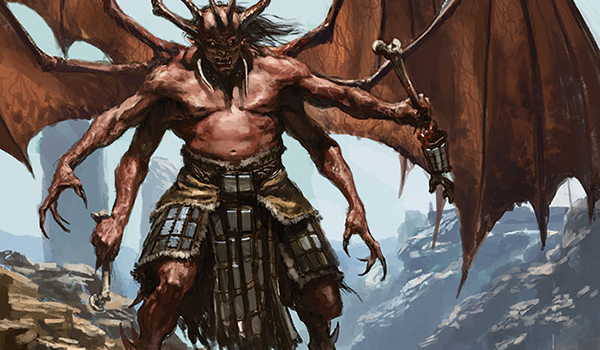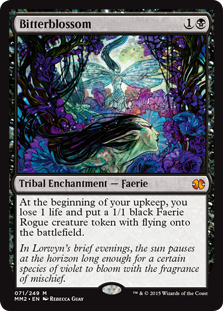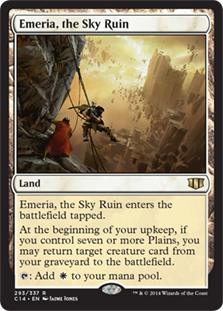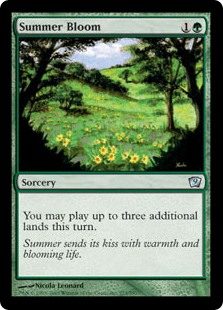Are you a Quiet Speculation member?
If not, now is a perfect time to join up! Our powerful tools, breaking-news analysis, and exclusive Discord channel will make sure you stay up to date and ahead of the curve.
This week, I’m dodging all the “Year in Review” and “Best of 2016” cliché topics, opting instead for pure, clean, fun craziness. 2016 has been a wild ride to say the least, and the hits just keep coming. For now, I’m throwing my hands in the air. No more theory, no more statistical analysis, no more passionate discussions. It’s time to say screw it. It’s time to look at some brews.

Those of you who have been around the Modern scene for long enough will likely recognize most of these decks. That said, they're certainly not the regular fair of your typical day-to-day MTGO and FNM metagames, and I've selected each because I believe it has something to teach us. All lists come from MTGO League results over the holiday weekend (December 24, December 25, and December 27). For each, I'll briefly show what's novel about the deck, before offering my thoughts on the specific build or the archetype in general.
[wp_ad_camp_1]
Mardu Midrange, by immapwner (5-0, Modern League)
Mardu as a strategy in Modern has never quite had enough to get there compared to other archetypes, appearing often in the lower parts of the Tier 2 standings. The card quality has always been in place, but wrapping disparate elements together into a cohesive strategy has long been an issue with this archetype, perpetually condemning it to the outskirts of society to look on in sorrow while the world celebrates its Jund and Abzan cousins.
 In my opinion, the major issue with Mardu has been the lack of a solid two-drop to put pressure on the opponent. Mardu’s strengths in discard and removal tend to push it to play a reactive game similar to Jund Midrange, but without Tarmogoyf to bring things together the deck can feel like spinning tires some of the time. We still have the issue of drawing the wrong half of our deck against opponents who refuse to play along by casting creatures for us to Murder, and we can often find ourselves scrambling to put a gameplan together against all the various strategies present in Modern.
In my opinion, the major issue with Mardu has been the lack of a solid two-drop to put pressure on the opponent. Mardu’s strengths in discard and removal tend to push it to play a reactive game similar to Jund Midrange, but without Tarmogoyf to bring things together the deck can feel like spinning tires some of the time. We still have the issue of drawing the wrong half of our deck against opponents who refuse to play along by casting creatures for us to Murder, and we can often find ourselves scrambling to put a gameplan together against all the various strategies present in Modern.
Here, Mr. "immapwner" has potentially solved that problem, presenting a consistent, powerful, and fast Plan A for when our spells don’t line up well against our opponent’s threats, or when we just need them dead quickly. Bitterblossom and Dark Confidant as our two-drop threats present alternate angles of attack that can be hard to defend against. Should our opponent be preparing themselves with Lightning Bolt? Lingering Souls would love to face off against one-for-one removal post-board. How about enchantment removal for Bitterblossom? Butcher of the Horde might have something to say about that as well.
All of this being said, those that have been around the block in Modern will probably recognize this deck, as it has popped up here and there for a while now, ever since Bitterblossom rejoined the fray. What, then, is the reason for this archetype’s (potential) renewed success?  That answer is complicated, but in my opinion, it starts at the top, with the most popular decks. Infect, Jund, Tron, Dredge: all of these strategies present a cohesive angle of attack that Mardu is uniquely able to handle. That hateful sideboard of 3 Rest in Peace, 3 Stony Silence, and 3 Blood Moon is no accident. This is a deck built to attack the top of the tree, while still retaining the ability to just play Magic against the rest of the field. This Mardu list is built on the premise that, regardless of what the opponent is doing, Lingering Souls and Thoughtseize are probably good against it.
That answer is complicated, but in my opinion, it starts at the top, with the most popular decks. Infect, Jund, Tron, Dredge: all of these strategies present a cohesive angle of attack that Mardu is uniquely able to handle. That hateful sideboard of 3 Rest in Peace, 3 Stony Silence, and 3 Blood Moon is no accident. This is a deck built to attack the top of the tree, while still retaining the ability to just play Magic against the rest of the field. This Mardu list is built on the premise that, regardless of what the opponent is doing, Lingering Souls and Thoughtseize are probably good against it.
Mardu Midrange's bane, historically, has been Naya Burn—so it’s definitely interesting to see this Mardu list perform in a metagame where 5% of the field is playing Burn (according to MTGGoldfish). Dark Confidant and Bitterblossom surely don’t want to see the red menace, but Lightning Helix and Butcher of the Horde more than make up for it. Besides, nothing is stopping us from boarding out Bob or Bitterblossom after game one—just keep in mind that we don’t have much to bring in, and we need to add Thoughtseize to the mix. Now, it’s possible immapwner dodged Burn on the way to his 5-0 finish, but just by looking at the list I have a feeling the deck has the ability to do just fine in the matchup.
UW Emeria Control, by Type41 (5-0, Modern League)
Another archetype we’ve seen before, Type41’s take on UW Emeria Control is a fresh look at a long-forgotten brew of old. I remember getting crushed by this deck playing Grixis Control at Grand Prix Charlotte 2015—talk about an antique! The strategy is deceptively simple: play lands, get value, stay alive, make money. What then, can this deck offer over more traditional Jeskai Control or UW Midrange decks that occupy similar metagame space?
 Again, I point you to the top decks in Modern currently. Amulet Bloom is gone, as is Splinter Twin, and the field has become much more linear and easy to attack. UW Sun Titan Control possesses a latent strength against most aggressive and midrange decks in the field (provided it doesn’t kill itself with a slow draw) leaving its power wholly to the question of which combo decks are seeing play currently. Right now, that’s Dredge and Tron, followed distantly by Death's Shadow Zoo and Ad Nauseam. 4 Ghost Quarter slows down Tron long enough for Surgical Extraction to come around, and should they assemble the combo, Detention Sphere can take care of pretty much anything. Dredge has to fight through Detention Sphere and Surgical Extraction as well, along with Supreme Verdict and the appropriately sized Wall of Omens. Given my time playing UW Spell Queller Blink, I can say from experience that a simple Wall of Omens is a surprisingly excellent card against Dredge’s primary angle of attack.
Again, I point you to the top decks in Modern currently. Amulet Bloom is gone, as is Splinter Twin, and the field has become much more linear and easy to attack. UW Sun Titan Control possesses a latent strength against most aggressive and midrange decks in the field (provided it doesn’t kill itself with a slow draw) leaving its power wholly to the question of which combo decks are seeing play currently. Right now, that’s Dredge and Tron, followed distantly by Death's Shadow Zoo and Ad Nauseam. 4 Ghost Quarter slows down Tron long enough for Surgical Extraction to come around, and should they assemble the combo, Detention Sphere can take care of pretty much anything. Dredge has to fight through Detention Sphere and Surgical Extraction as well, along with Supreme Verdict and the appropriately sized Wall of Omens. Given my time playing UW Spell Queller Blink, I can say from experience that a simple Wall of Omens is a surprisingly excellent card against Dredge’s primary angle of attack.
All this being said, I would say that UW Sun Titan Control is a fine choice in this metagame, but not the best available to us. Mortarpod and the like are great against Infect, but we’re still playing 24 land and a bunch of do-nothing value cards in a format where with the wrong draw we could be dead on turn three. Sun Titan is a great endgame, but do we even need something like that to win a game of Magic now? Ancestral Vision is in the format again, and archetypes like Jeskai Control have shown that just untapping and going from one to five cards in hand against an opponent almost out of gas is often enough to warrant the concession. Magic players love to scoop em’ up—who says we need to cast a six-drop to make them do it? Still, if you’ve thought about giving this archetype a try, now is a fine time for it.
Skred Red, by TeamRockett (5-0, Modern League)
I've been hammering on the power of Anger of the Gods and Blood Moon against their respective target decks for some time now. Nowhere is their power more apparent than when propping up otherwise underpowered decks like RW Prison or, seen here, Skred Red. I'll be honest and say that I think "underpowered" is a judicious term for Skred Red. In truth I think it's just a bad deck, notwithstanding the recent Grand Prix trophy added to its pedigree.
To an extent, cohesive strategies can ignore the prerequisite of playing individually good cards—especially in Modern—but some of the cards seen here are just plain un-impressive. Stormbreath Dragon? Koth of the Hammer? Playing these expensive cards and having them do powerful things feels nice, but at some point we have to compare them against other similar strategies. Jund, for example, does more or less the same thing as Skred Red, but with much more consistency and reliability. If we're asking ourselves, "Aren't we just a worse something else?" and the answer isn't an immediate "No," then we have to at least take a second look at our strategy. In the case of Skred Red I feel strongly that it's exactly one of these traps, and I'd caution you against falling into it. Moving on.
Amulet Titan, by Gretorp (5-0, Modern League)
Hey, Summer Bloom is gone, but who says we can’t still have fun? Now, I’m not suggesting that triggering untaps on tapped land plays is fun for anyone, but there exists a certain population of Magic players that like making others feel bad, so here we are. Amulet Bloom in 2017 (potentially) like it’s the summer of yesteryear.
 With Summer Bloom gone, the archetype really only took a step back. In a world of Splinter Twin, one turn was often the difference between a win and a crushing loss, but Twin left when Bloom got the axe—so why haven’t we seen Amulet Bloom until now? The answer is, we have—but only here and there, cashing a League event probably once a week. Most of the work on this archetype has been done by three players, which suggests to me either that they’re onto something, or that they’re holding on to the last embers of their dying hopes and dreams, and would do better to give it up and move on.
With Summer Bloom gone, the archetype really only took a step back. In a world of Splinter Twin, one turn was often the difference between a win and a crushing loss, but Twin left when Bloom got the axe—so why haven’t we seen Amulet Bloom until now? The answer is, we have—but only here and there, cashing a League event probably once a week. Most of the work on this archetype has been done by three players, which suggests to me either that they’re onto something, or that they’re holding on to the last embers of their dying hopes and dreams, and would do better to give it up and move on.
Who’s to say which is which, which is why I’m here devoting text to this archetype today! It’s difficult to talk about this archetype in the same vein as the other brews we’ve discussed, matching its strategy up against the current metagame, because this archetype interacts with the opponent as little as possible. Whether you’re Jund, Dredge, or Affinity, Amulet is going to do mostly the same thing regardless. This type of situational indifference makes it difficult to pinpoint this archetype’s success, because it’s been putting up relatively the same frequency of finishes for months now, through all sorts of metagame changes and adaptations.
Amulet Bloom is among the list of brews today that highlight, in my opinion, the dangers present in putting too much stock into a “strong-finishing” list. Continued success is usually a good thing. But in this scenario, seeing months of weekly cashes from Amulet Bloom pushes me away from picking up the archetype, not towards it. Plenty of people have seen this deck in action by now, and it isn't gaining any ground. Had Amulet Bloom suddenly burst onto the scene, with four finishes in the last couple of weeks, I would be more excited about the archetype, but now we’re in the classic case of too much of a good thing. Unlike an entire box of Double Stuf Oreo Cookies at noon on a Wednesday, this is one too-much-of-a-good-thing I’m going to let pass.
Thanks for reading, and I’ll see you all in 2017.
Trevor Holmes
The_Architect on MTGO
Twitch.tv/Architect_Gaming
Twitter.com/7he4rchitect





“no more statistical analysis”
It seems this sentiment is shared with whoever is responsible for the metagame updates.
I understand everyone’s frustration about the lack of metagame updates. This is my fault, as I’ve had trouble managing my time these last few months due to a new job. But rest assured, they are coming back ASAP.
Nice coverage, and it was especially rewarding to hear some talk on why Mardu does and doesn’t see success. Despite the restriction on this past weekend, I’m a little surprised the jeskai aggro list popping up didn’t make this article. Nonetheless, a fun read !
Send me a link to the list, that one must have flown under my radar!
A list very similar to this one 7-1’d a large event recently. Another Nexus article discussed the deck some, but I figured it was an innovative enough brew to mention to you as well.
http://www.mtgtop8.com/event?e=14196&d=284594&f=MO
Never thought of skred as being like jund at all. Its a roulette wheel where you maindeck twelve sideboard cards and hope to draw one that cripples the opponent (moon relic anger) making them unable to stop your finisher – koth or stormbreath. Pk and scourge give you a few more threats to work with that can also buy time but thats about it. Not unlike the hate cards the threats will give certain decks fits – sometimes theres just nothing you can do about a t3 koth into t4 anger plus skred.
Anyways not sure hoping to draw anger vs dredge and moon vs abzan is the same as curving iok goyf liliana.
I always found it really strange that sired decks don’t bother with a second color at all. There’s snow covered lands of all types. Fetchlands can fetch basics so it’s not like you have to sacrifice snowland density
I’ve done some stuff with snow islands for control. Scrying sheets and mouth of ronom are very nice tools in a blue deck
That’s because there are strictly better decks than Skred once splashing is put into the equation. Sun and Moon is just better than RW Skred, Ponza is just better than RG Skred, and Blue Moon is just better than RU Skred. Skred’s strength is Koth, and Koth demands that you stay in mono-red.
Yep scrying sheets is also a reason not to run fetchlands – but its mostly koth. Fetches also get locked as non snow lands under blood moon which hurts your skred count
Y’know what card is really, really good against Burn? Collective Brutality, that’s what card. Not sure why it is not showing up in that Mardu list that also runs redundant planeswalkers and Lingering Souls, but it seems like an oversight, from where I’m sitting.
Whoops, call me confused; wrong build, no walkers. Still, Brutality seems like it should be there.
I agree, I talked about Collective Brutality (against Burn specifically) a couple weeks ago in my Underplayed Cards article. Love that card, especially in that matchup, but against the field as well. Great on the play, brings you back to parity on the draw.
Way to go trevor! this is an article i can get behind. totally love seeing butcher of the truth in mardu. might give this list a try. if i can expect this type of content going forward, i will definitely change my outlook on the site. i want to know whats going on in this big modern world and this article just showed me something new. thanks trev!
one thing i will say is that your analysis of the decks leaves a little to be desired. for instance skred red, while being similar to jund in that it is a mid range strategy, has a lot of advantages. i can think of three match ups that i would rather be playing skred red than jund. first is burn. we have so many ways to kill there creatures and we don’t help our opp by paying life with our lands. second and third are tron and valakut, proven midrange predators. packing blood moon and molten is a little too much for these decks and the hasty damage allow us to close out the game quickly. i am not too familiar with the other decks, but i am sure they wouldn’t be 5-0ing leagues if they were jank.
It made me so happy to see UW Emeria Control on this list. I sleeved up basically the same version and took it to a Japanese FNM. I got crushed, but that was entirely due to pilot-error. It’s not a deck for the faint of heart, nor for the timid. The deck wins entirely on value and you need to have a definite, solid gameplan and squeeze every bit of value out of the deck. It top decks terribly and has almost no pressure in the early turns. But, getting to the late-game? Man, you can do some seriously messed up things. It’s my go-to deck when I want to have fun.
Hey Trevor,
Bit late commenting on this, but really wanted to pipe up about the Amulet deck.
First off – I was the unfortunate sole who decided not to let the deck die, and managed to get the first result many months ago. Others have since improved my initial list, and I’m fairly comfortable with it now.
I totally appreciate your comment on “too much of a good thing” – e.g. why hasn’t it put up more consistent results? Well, I do think there’s another element to this. First of all, the original amulet list WAS difficult to play, and that could win on turn 2. This realistically can’t (it can, but its a bit more conviluted and a lot less likely), but still retains all the original challenges the first list ran. When you consider the “banned” deck was actually on show for more than a year before banning, and then consider the amount of results that deck had, I think you’d start to understand how difficult it is to pilot, and therefore how unlikely it is to be picked up successfully now that it’s weaker.
My main point here though (and I know everyone says this about their own pet decks) is that I do believe the deck IS capable of competiting. It has a tonne of close match-ups, and only a few that are either tough or favoured (i’d consider dredge / burn favourable, and infect / kiln fiend decks unfavourable). I’m not a great player, but I managed to go 5-0 with a real rough list. I keep a record of my results to give me a better idea of my strong/weak match-ups, and it’s ALWAYS above 60%, but often slightly better. I’m no pro either, i just dedicated the time to the deck.
For what it’s worth, I think if you can learn the deck, it’s very much worth playing. Sparadic results (for me anyway) point to the fact that not enough people have picked it up and learnt it, not that it’s too weak. LordCommanderSnow did this the first time around, and it went on to get a ban!